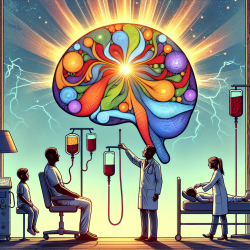Introduction
Stroke remains one of the leading causes of mortality and permanent disability worldwide. In Iran, the situation is exacerbated by a high age-adjusted stroke incidence rate, placing it within the so-called "stroke belt." A recent study titled "Acute management of stroke in Iran: Obstacles and solutions" provides valuable insights into the current challenges and potential improvements in stroke care within the country.
Key Findings from the Research
The study highlights several critical obstacles to effective stroke management in Iran:
- Lack of Public Awareness: A significant portion of the population is unaware of stroke symptoms and the urgency required in its treatment.
- Inadequate Hospital Infrastructure: Many hospitals lack the necessary resources, such as a single call activation system for stroke alerts and 24-hour coverage for endovascular programs.
- Delayed Hospital Response: The time from hospital arrival to decision-making can take between 116-160 minutes, which is critical time lost for stroke patients.
Proposed Solutions
The study proposes several solutions to address these challenges, focusing on both systemic changes and public education:
- Enhancing Public Education: Initiatives to increase awareness about stroke symptoms and the importance of timely medical intervention should be prioritized.
- Improving Hospital Protocols: Establishing organized stroke programs and ensuring hospitals are equipped with guideline-based algorithms for treatment.
- Strengthening EMS Systems: Training EMS personnel in stroke assessment and ensuring rapid transport to stroke-ready facilities.
Implementing Change: A Call to Action for Practitioners
For practitioners looking to improve their skills and contribute to better outcomes for stroke patients, the study provides a robust framework for action:
- Advocate for Policy Change: Engage with healthcare policymakers to prioritize stroke care and establish national standards for stroke centers.
- Participate in Public Education Campaigns: Use your expertise to educate the public about stroke symptoms and the importance of immediate medical attention.
- Engage in Continuous Learning: Stay updated with the latest research and protocols in stroke management to provide the best care possible.
Conclusion
Improving stroke care in Iran requires a multifaceted approach that includes public education, policy advocacy, and systemic changes within hospitals. By implementing the solutions outlined in the study, practitioners can play a crucial role in enhancing outcomes for stroke patients. To read the original research paper, please follow this link: Acute management of stroke in Iran: Obstacles and solutions.










